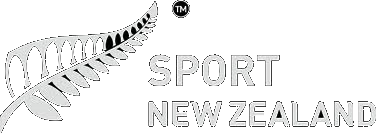The Decades: The forties
The late Allen Johns (life member) was an outstanding figure over a great number of years in the sport. He was a double national title holder in 1947, represented his country in 1958 and 1959, and was manager of the New Zealand team in the world championships in South Africa in 1973. As well he was a chairman of the Management Committee when it was based in Palmerston North in the fifties. He wrote the following contribution to the 1988 Jubilee booklet.
Introduced from England
The sport was first introduced to New Zealand by players who had encountered the game in England.
And even though Squash had been played competitively since 1932, records are sparse, no doubt due to the intervention of the Second World War (1939-45). Squash was however first played on a national basis in November 1932, at the Christchurch Club which along with the Devonport Naval Base (Auckland) two courts, were the only ones available for competitions at the time.
First champions
The 1932 champion and first winner, the late G.E.F Kingscote was recognised as the father of the New Zealand game having played extensively at the Bath Club, England! He is credited with having introduced the drop shot to New Zealand and later the technique of making the ball die in the crack - the "nick" shot.
The first New Zealand Association in 1932 was unincorporated with Mr Vivian Riddiford of Wellington as Patron, Mr Kingscote as President and Mr H N Watson (Palmerston North) as Vice President. Mr P D Hall was first secretary and held office until 1936 when Mr T.A. Gresson (later Mr Justice Gresson) succeeded him. During the war the Association acted only to organise New Zealand tournaments. Some important firsts are recorded for this period - 1933 the opening of the first Public (or Open) Club at Timaru and in 1934 the first visit of New Zealand Players to the Australian Championships at the Royal Melbourne Tennis Club courts when D W J Gould (Christchurch) reached the semi-final, and P D Hall the final. Both were beaten by Harry Hopman of Davis Cup fame.
Incorporated
The New Zealand Squash Rackets Association, (as it was known until the early nineties,) was formally incorporated in 1939 with the initial fifteen members being divided into three classes. Open Clubs, were those with open membership namely Timaru, Palmerston North, Hamilton and Oamaru. Closed Clubs were those with restricted membership, notably Wellington Club, Christchurch Club, Devonport, Naval Base, South Canterbury Club and Fernhill Club (Dunedin) and there were several private court owners - P.D. Hall, J.E.F. Vogel and others.
G.E.F. Kingscote who hailed from Christchurch was also the first President of the Incorporated association holding office until his retirement in 1947 when he was succeeded by the late Roy J Mitchell. The names Riddiford, Kingscote and Mitchell are perpetuated through the following trophies and competitions:
- Riddiford Gold Cup - National Men's Championships
- Kingscote Plate - National Men's Plate Competition
- Mitchell Rose Bowl - National Womens Championship
- Mitchell Cup - National Teams Competition
Indebted
During the Second World War the game naturally stagnated and up to this time the only national tournament was the NZ Championships (Men). This was suspended after 1939 and resumed in 1946. The venue alternated each year between Timaru and Palmerston North until 1951.
During 1946 a Special General Meeting was held in Christchurch and the first recorded Annual General Meeting was held in Timaru. The revival and promotion of Squash were main items for discussion at these meetings. The sport was however essentially still men only with the Womens Championship being first competed for in 1951.
In 1946 there were 20 courts in New Zealand affiliated or available to the national Association. These included clubs at Hamilton, Palmerston North, Timaru, South Canterbury (also at Timaru), Oamaru, Dunedin and Invercargill. As well as Armed Services courts at Devonport Naval Base, and the RNZAF Stations at Whenuapai, Ohakea, Woodbourne and Invercargill. In addition there were two private courts at Christchurch. It was probably not until 1952 that further courts were known to be built.
One of the earlier private courts in New Zealand was at the home of the late H.N. (Doggie) Watson of Palmerston North. The court was smaller (shorter and narrower) than the standard court and the ball provided by the host was harder and very much faster than the present ball. It was basically a drive and volley game but good fun and Allen Johns was a regular invitee to the court on a Sunday afternoon back in the pre-war years. "Doggie" Watson as he was affectionately known because he was seldom without the company of his two small Sydney Silky dogs, was a widower at that time. He was the typical English Squire. His home was to match, set in spacious grounds with a long tree-lined entrance driveway. Fresh scones, jam and cream provided by his housekeeper were the ritual for afternoon tea for the small group of invited players and spectators.
Limited
There was limited tournament play during this period and only the occasional inter club visit, due to the long distances between clubs.
Allen Johns' earliest recollection of an interclub match was Palmerston North versus Hamilton in Hamilton, then a one-court men-only club. This was probably 1937 or 1938 and the Palmerston North team having to travel by train (The Limited Express) arriving in Hamilton around 7am Saturday.
"We were met by our hosts at the station and taken to Mr Wally King's (solicitor) residence for whiskeys & milk and breakfast. The good old days."
The situation in the South Island was much the same although interclub visits were more regular from 1946 onwards with the courts at Timaru, Oamaru, Dunedin and Invercargill.
<< Back










